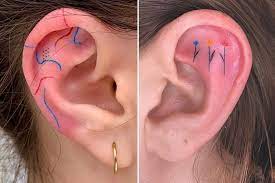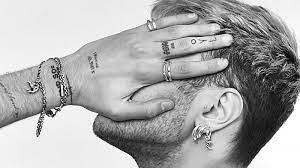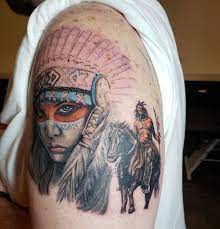
Factors Affecting Pain Level:
Your choice of artist
Skin thickness
Skin Sensitivity:
Thin and sensitive skin behind the ear
Potential discomfort: rattling sensations, headaches, sleepiness, hypersensitivity to buzzing sounds
Coping with Pain:
Consider pain threshold and management options
Take an OTC pain reliever or apply numbing cream before getting tattooed
Ink Fading and Care Tips:
Ear Tattoos more susceptible to ink fade
Address with touch-up session
Moisturize and limit sun exposure for proper healing
Mastoid Bone and Infections:
Mastoid bone located behind the ear
Mastoiditis: bacterial infection can lead to severe complications if left untreated
Testing and treatment options
Impact of Tattoo Gun Noise:
The rattling sound of a tattoo gun
It can be distracting and increase focus on pain
It may cause drowsiness and reduced pain absorption
Inner Ear Tattoos and Pain Relief:
Thin and sensitive skin makes inner ear Tattoos popular
Numbing cream (e.g., Zensa Numbing Cream) for pain relief during the procedure
Importance of proper aftercare to prevent infection
Choosing an Experienced Tattoo Artist:
Reduce pain by selecting an experienced and professional artist
Eat before the session for better pain management
Consider using a numbing cream or over-the-counter medication
Taking Care of Your Ear Tattoo:
Special care is needed due to vulnerability to infection
Avoid using hair products near the tattoo
Apply sunscreen and use protection (hat or scarf) when going out
Ear Tattoos: Subtle and Delicate Pieces of Art:
Popular among celebrities and the general public
Provides a subtle and delicate piece of art that can be hidden or displayed
Consult with a tattoo artist for design ideas based on your ear shape and size

